The glycemic index (GI) ranks carbohydrates based on how quickly they raise blood sugar levels. Athletes often wonder if choosing low or high GI foods can boost their performance. Research shows mixed results on whether the glycemic index of pre-exercise meals impacts athletic performance.
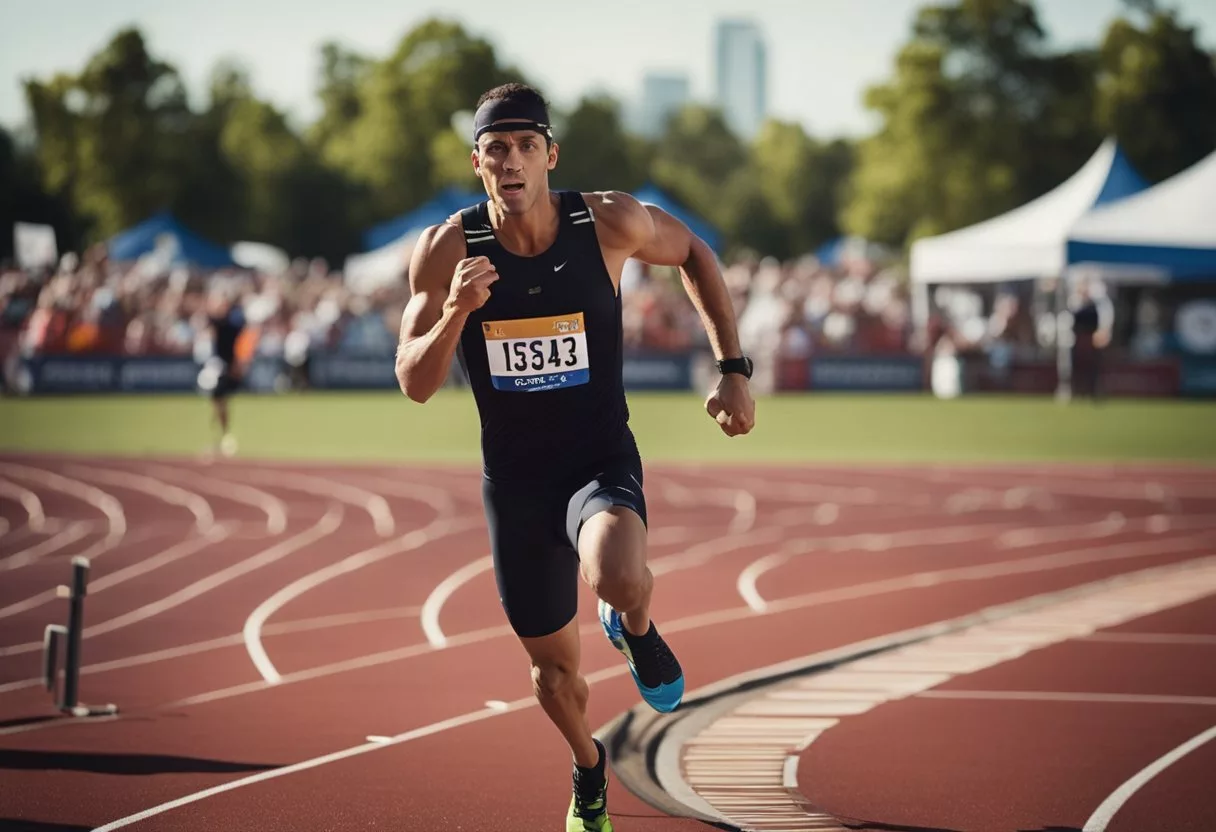
Some studies suggest low GI carbs before exercise may help endurance by providing steady energy. Other research finds no difference between high and low GI foods. The effects can vary based on the type of exercise, timing of meals, and individual factors.
For most athletes, focusing on overall carbohydrate intake is more important than obsessing over GI values. Eating enough total carbs to fuel workouts matters more than the specific GI of each food. Still, some athletes may benefit from experimenting with pre-exercise meal GI to see what works best for them.
Key Takeaways
- The glycemic index ranks how quickly carbohydrates raise blood sugar
- Research is mixed on whether GI significantly impacts athletic performance
- Total carbohydrate intake is generally more important for athletes than GI
What is the Glycemic Index
The glycemic index provides a way to measure how foods affect blood sugar. It helps athletes choose carbs that can boost energy and performance.
Definition and Classification
The glycemic index (GI) rates carbohydrates on a scale from 1 to 100 based on how quickly they raise blood sugar. Foods are grouped into three categories:
- Low GI: 55 or less
- Medium GI: 56-69
- High GI: 70 or above
Low GI foods include most fruits, vegetables, and whole grains. They break down slowly, providing steady energy. High GI foods like white bread and sugary drinks cause rapid spikes in blood sugar.
Glycemic Index and Blood Glucose Levels
GI directly relates to blood glucose changes after eating. High GI foods cause a quick rise and fall in blood sugar. This can lead to energy crashes. Low GI foods create a more gradual increase and decrease in blood glucose.
For athletes, stable blood sugar helps maintain energy during long workouts. It may also improve endurance and delay fatigue. Choosing the right GI foods before, during, and after exercise can affect performance.
Factors Influencing Glycemic Response
Many things can change a food’s glycemic impact:
- Ripeness: Riper fruits have a higher GI
- Processing: Refined grains have a higher GI than whole grains
- Cooking method: Boiled potatoes have a lower GI than baked potatoes
- Fiber content: More fiber lowers GI
- Fat and protein: Adding these nutrients to a meal lowers the overall GI
The glycemic load considers both the GI and the amount of carbs in a serving. This gives a more accurate picture of a food’s effect on blood sugar. Athletes can use this info to plan meals that support their training and performance goals.
The Role of Carbohydrates in Athletic Performance
Carbohydrates play a crucial role in fueling athletic performance. They provide energy for muscles and help maintain blood glucose levels during exercise.
Carbohydrates as an Energy Source
Carbohydrates are the body’s preferred source of energy during physical activity. When eaten, they break down into glucose, which muscles use for fuel.
High-carbohydrate foods are best for providing energy during exercise. They help maintain performance by keeping muscles supplied with fuel.
Athletes often consume carbohydrate-rich foods or drinks before and during exercise. This practice helps keep blood sugar levels stable and provides a steady energy source.
Endurance athletes should aim to consume 30-60 grams of carbohydrates per hour of exercise. This can be achieved by drinking 600-1200 mL of a 6-8% carbohydrate sports drink hourly.
Glycogen and Its Importance for Athletes
Glycogen is the stored form of carbohydrates in muscles and the liver. It’s a key energy reserve for athletes during intense or prolonged exercise.
When glycogen stores are low, performance can suffer. Athletes may feel tired and struggle to maintain intensity.
Proper carbohydrate intake helps replenish glycogen stores after exercise. This is crucial for recovery and preparing for the next training session or competition.
Endurance athletes typically need higher glycogen levels. They may benefit from carbohydrate loading before events to maximize glycogen storage.
Balancing Macronutrient Intake
While carbohydrates are important, athletes need a balanced intake of all macronutrients: carbohydrates, proteins, and fats.
Protein helps with muscle repair and growth. Fats provide energy for low-intensity, long-duration activities.
The ideal balance of macronutrients varies based on the type of sport, training phase, and individual needs.
Endurance athletes typically need a higher percentage of calories from carbohydrates. Strength athletes may require more protein.
Timing of nutrient intake is also important. Eating carbohydrates before, during, and after exercise can help optimize performance and recovery.
Glycemic Index and Sports Nutrition
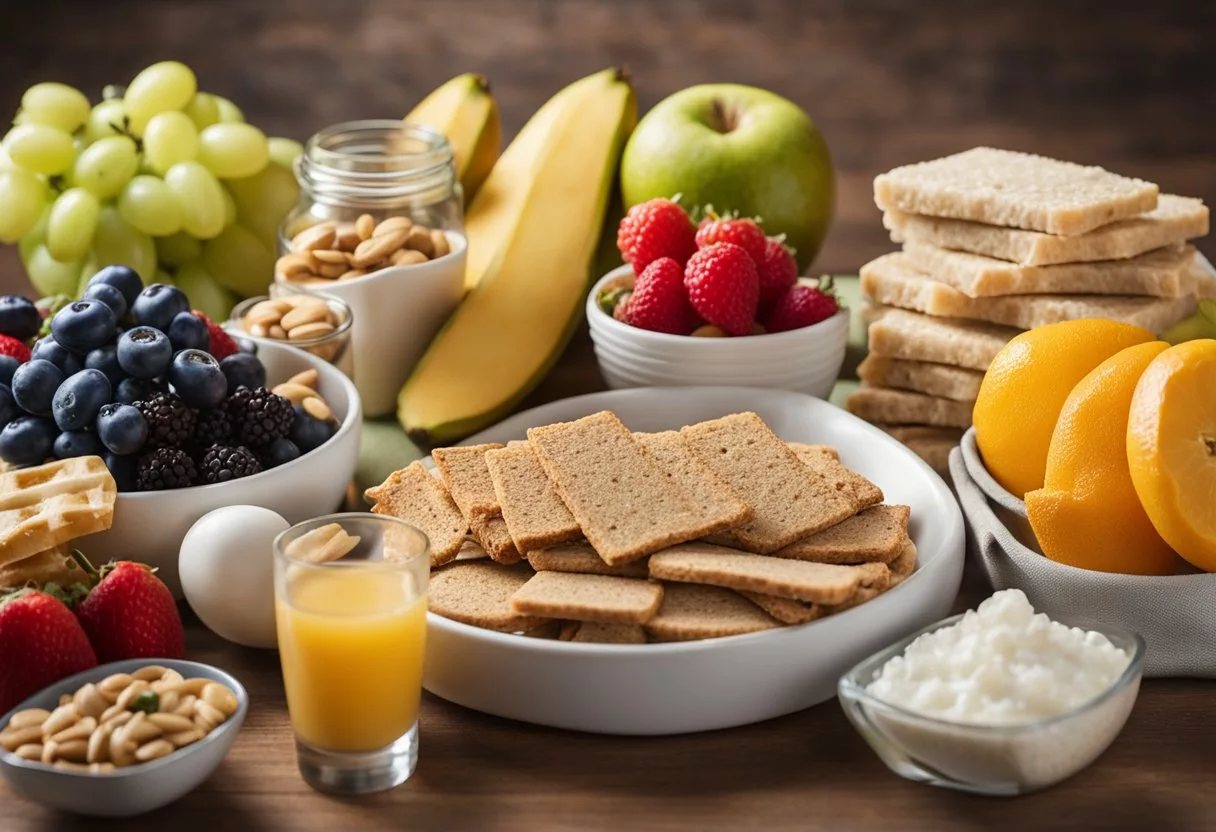
The glycemic index plays a key role in sports nutrition. It affects how athletes fuel their bodies before, during, and after exercise. Choosing the right foods based on their glycemic index can impact performance and recovery.
Pre-Exercise Meals and Glycemic Index
Low-glycemic index (GI) foods are often recommended for pre-exercise meals. These foods provide steady energy and help maintain blood sugar levels. Low-GI sports nutrition bars can improve cycling performance compared to higher-GI options.
Examples of low-GI pre-exercise foods include:
- Lentils
- Rolled oats
- Whole grain bread
These foods release glucose slowly into the bloodstream. This can help athletes maintain energy levels during longer workouts or competitions.
High-GI foods may cause a rapid spike and then drop in blood sugar. This could lead to feelings of fatigue during exercise.
Glycemic Index During and Post-Exercise
During exercise, high-GI foods can provide quick energy. They are easily digested and absorbed. This makes them useful for intense or long-duration activities.
After exercise, high-GI foods can be beneficial for recovery. They help replenish glycogen stores quickly. This is especially important for athletes who train or compete multiple times per day.
Some studies show that high-GI foods after exercise can improve next-day performance. However, more research is needed to confirm these findings.
Integrating Low-GI Foods in Athletic Diet
Low-GI foods can be a valuable part of an athlete’s overall diet. They provide sustained energy and help control appetite. This can be useful for athletes managing their weight.
Some ways to include low-GI foods in an athletic diet:
- Choose whole grains over refined grains
- Eat more legumes and vegetables
- Pair high-GI foods with low-GI options to balance meals
It’s important to note that individual responses to GI can vary. Athletes should experiment to find what works best for their bodies and performance needs.
Long-term effects of low-GI diets on athletic performance are still being studied. More research is needed to fully understand the impact on different types of athletes and sports.
Impact of Glycemic Index on Performance and Recovery
The glycemic index (GI) of foods can affect athletic performance and recovery in several ways. It influences blood glucose levels, energy availability, and muscle glycogen replenishment.
Effect on Endurance Performance
Endurance performance can be impacted by the GI of pre-exercise meals. Low GI foods may provide sustained energy during long activities. They release glucose slowly into the bloodstream.
High GI foods cause rapid blood sugar spikes. This can lead to quick energy crashes during exercise. Some studies show improved endurance with low GI pre-exercise meals.
But results are mixed. The impact may depend on the specific sport and athlete. More research is needed to make firm conclusions about GI and endurance.
High GI vs. Low GI on Recovery
The GI of post-exercise meals affects recovery. High GI foods may speed up initial recovery processes. They cause a rapid insulin response, which can help with nutrient uptake.
Low GI foods provide a steady supply of energy. This can be beneficial for longer-term recovery. One study found that low GI sports bars improved next-day cycling performance compared to moderate GI bars.
A mix of high and low GI foods may be ideal for recovery. This approach provides both quick and sustained energy.
Muscle Glycogen Resynthesis
Muscle glycogen resynthesis is crucial for recovery after intense exercise. The GI of post-exercise meals can influence this process.
High GI carbohydrates may lead to faster initial glycogen replenishment. They cause a larger insulin response, which helps drive glucose into muscles.
Low GI foods can support sustained glycogen synthesis over time. They provide a steady stream of glucose for hours after consumption.
Some research suggests that the total amount of carbohydrates consumed is more important than GI for glycogen resynthesis. A combination of high and low GI foods may be optimal for complete recovery.
Evaluating the Evidence
Research on glycemic index and athletic performance has produced mixed results. Scientists have used different study designs to examine this relationship.
Studies and Trial Results
Time trial performance is a key measure in many studies. Some trials show low-glycemic index (GI) foods improve cycling times. Others find no difference between low and high GI meals before exercise.
Short-term effects seem clearer than long-term impacts. One study found low GI bars helped next-day recovery more than moderate GI bars.
Results often depend on the type and timing of food intake. Pre-exercise meals show different effects than during-exercise fueling.
Meta-Analysis and Systematic Reviews
Meta-analyses combine data from multiple studies. This gives a broader view of glycemic index effects.
Some reviews find small benefits for low GI pre-exercise meals. Others see no clear advantage for either low or high GI foods.
The mixed results make firm conclusions difficult. More research is needed, especially on long-term effects.
Randomized Controlled Trials
Randomized controlled trials are the gold standard for nutrition research. Many use a crossover design, where athletes try both low and high GI diets.
These studies often focus on endurance sports like cycling or running. Some measure blood glucose and insulin responses.
Trial length varies from single meals to weeks of dietary changes. Longer trials may show different results than short-term studies.
Some trials find low GI diets improve fat burning during exercise. Others see no change in performance or metabolism.
Optimal Glycemic Index for Athletes
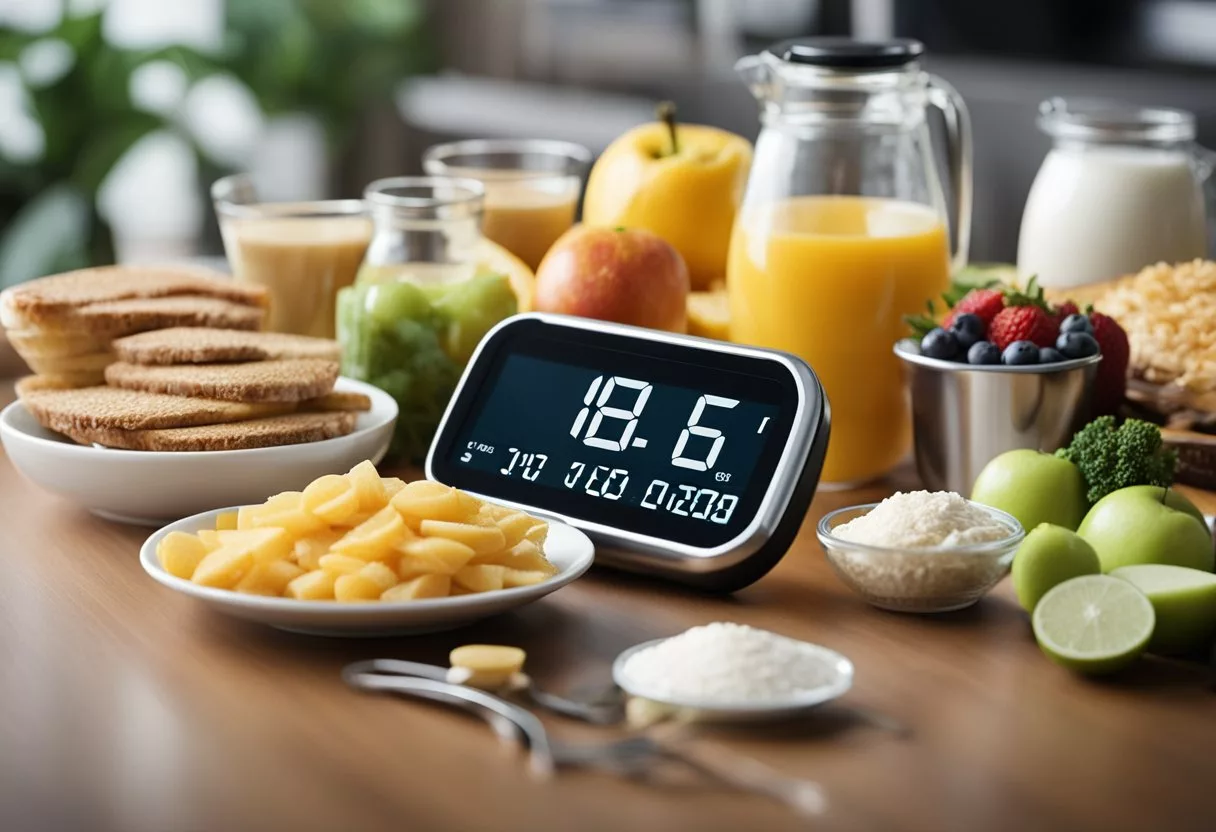
The glycemic index (GI) of foods can impact athletic performance. Choosing the right GI for meals and snacks depends on the type of activity, timing, and individual needs.
Low-GI Diets and Endurance
Low-GI diets may benefit endurance athletes. These foods release glucose slowly, providing steady energy. Endurance-trained individuals often prefer low-GI carbs before long events. This helps maintain blood sugar levels and delays fatigue.
Low-GI foods include:
- Whole grains
- Legumes
- Most fruits and vegetables
These options can help athletes feel full longer. They also support consistent energy levels during training and competition.
When to Utilize High-GI Foods
High-GI foods have their place in an athlete’s diet. They raise blood sugar quickly, which can be useful in certain situations. Athletes might choose high-GI foods:
- Immediately after intense exercise
- During long endurance events
- When quick energy is needed
High-glycemic index carbohydrates can speed up recovery after workouts. They replenish glycogen stores faster than low-GI options. This is crucial for athletes with multiple training sessions or competitions close together.
Individualized Glycemic Responses
Each athlete may respond differently to various GI foods. Factors that affect glycemic response include:
- Fitness level
- Body composition
- Gut microbiome
- Stress levels
It’s important for athletes to test different foods during training. This helps them find what works best for their body and performance goals. Some may feel better with mostly low-GI foods, while others might need more high-GI options.
Keeping a food and performance journal can help track individual responses. Athletes should work with a sports nutritionist to create a personalized eating plan. This ensures optimal fueling for improved exercise performance based on their unique needs.
Glycemic Index in Meal Planning

The glycemic index plays a key role in planning meals for athletes. It helps balance blood sugar levels and provides sustained energy for performance. Whole grains, fiber, and healthy carbs are important components.
Incorporating Whole Grains and Fiber
Whole grains and fiber are essential for athletes’ meal plans. They have a lower glycemic index compared to refined grains. This means they release glucose more slowly into the bloodstream.
Some good choices include:
• Brown rice • Quinoa • Oats • Whole wheat bread
These foods help maintain steady energy levels during workouts. They also keep athletes feeling full longer.
Fiber slows digestion and helps control blood sugar spikes. Athletes should aim for 25-30 grams of fiber daily. Vegetables, fruits, and legumes are great fiber sources to include in meals.
Managing Blood Glucose with Meal Timing
Meal timing is crucial for managing blood glucose levels. Athletes should eat low glycemic index meals 2-3 hours before exercise. This provides steady energy without causing a sugar crash.
During long workouts, small high glycemic index snacks can help. They quickly boost blood sugar and energy.
After exercise, a mix of high and low glycemic index foods works well. This replenishes energy stores and aids recovery.
Spacing meals every 3-4 hours helps keep blood sugar stable. Small, frequent meals are often better than large, infrequent ones for athletes.
Selecting Healthy Carbohydrate Sources
Choosing the right carbs is key for athletic performance. Low glycemic index options are best for steady energy.
Good choices include:
• Sweet potatoes • Lentils • Chickpeas • Apples • Berries
These foods provide sustained energy and important nutrients. They help avoid the energy crashes associated with high glycemic index foods.
Athletes should limit refined sugars and processed carbs. These can cause rapid spikes and drops in blood sugar. Instead, focus on whole, unprocessed carbohydrate sources for optimal performance.
Supplements and Sports Products
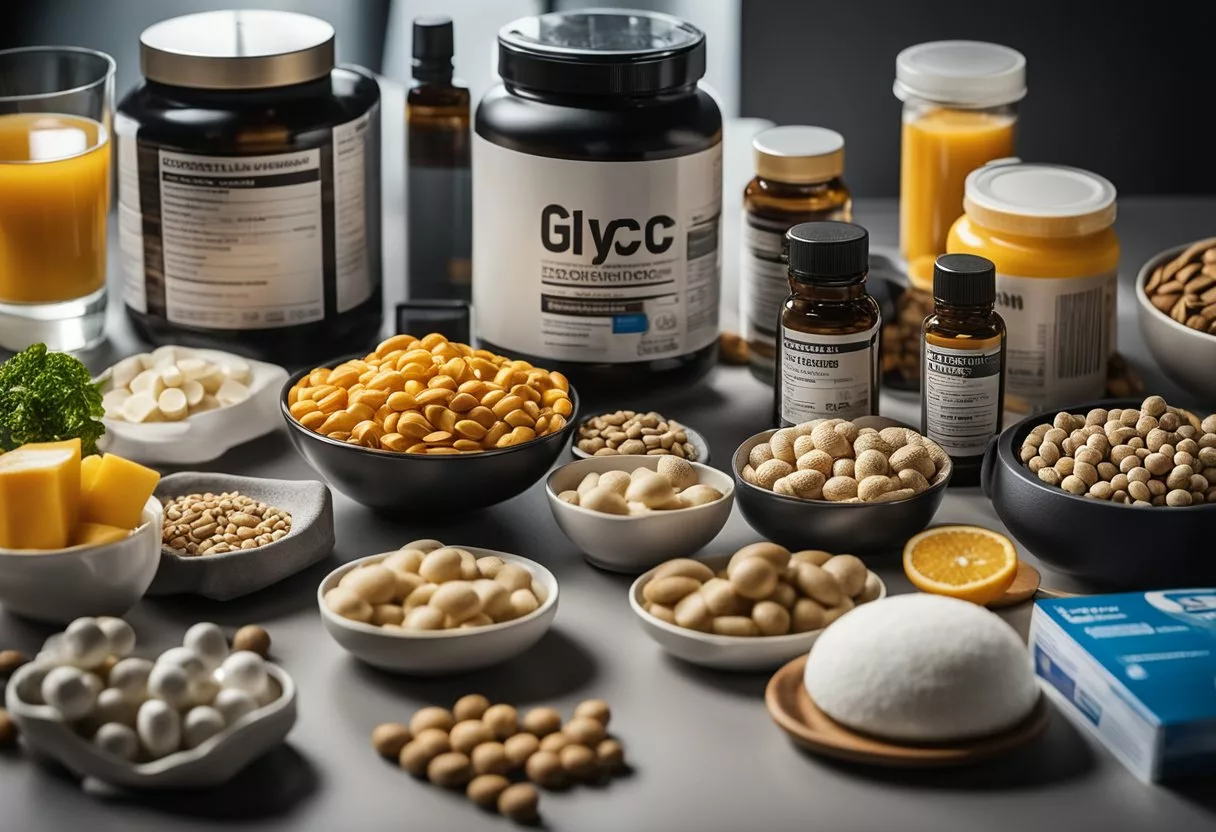
Athletes use various supplements and sports products to boost performance and aid recovery. These products come in different forms and provide different nutrients for before, during, and after exercise.
Energy Bars and Gels
Energy bars and gels are popular among athletes for quick energy during workouts. These products often have a high glycemic index to provide fast-acting carbohydrates. Bars typically contain a mix of carbs, protein, and fats. They offer a longer-lasting energy source.
Gels are mostly simple sugars for rapid absorption. They’re easy to eat while moving and provide quick fuel. Some gels include caffeine or electrolytes for added benefits.
Both bars and gels come in many flavors. Athletes should test these products during training to find what works best for them.
Sports Drinks and Carbohydrate Supplements
Sports drinks help replace fluids and electrolytes lost through sweat. They also provide carbohydrates for energy. Most sports drinks have a moderate to high glycemic index.
Carbohydrate supplements come in powder or liquid form. Athletes mix them with water to create custom energy drinks. These supplements allow for precise control of carb intake.
Some products combine different types of carbs. This can improve absorption and reduce stomach issues. Athletes should choose drinks based on exercise intensity and duration.
Protein and Recovery Products
Protein supplements aid muscle recovery and growth after exercise. Common forms include powders, bars, and ready-to-drink shakes. Whey protein is fast-absorbing and popular among athletes.
Recovery products often combine protein with carbs. This mix helps replenish energy stores and repair muscle tissue. Some include added vitamins or amino acids for extra benefits.
Timing matters for these products. Athletes often consume them right after workouts. This can help start the recovery process quickly. The amount needed varies based on body size and exercise type.
Special Considerations for Athletes

Athletes need to carefully consider how the glycemic index of foods affects their performance. The right balance can impact fat burning, energy levels, and endurance during training and competition.
Glycemic Index and Fat Oxidation
The glycemic index (GI) of foods can influence an athlete’s fat oxidation rates. Low-GI carbohydrates may enhance fat burning during exercise. This is important for endurance athletes who rely on fat as a fuel source.
High-intensity activities may benefit from higher GI foods. These provide quick energy. Lower GI foods are often better for moderate, longer-duration exercise.
Athletes should test different GI foods during training. This helps them find what works best for their body and sport.
Adapting to Metabolic Demands
Different sports have unique metabolic demands. Endurance athletes often need steady energy. They may prefer low to moderate GI foods.
Sprint and power athletes require quick bursts of energy. Higher GI foods can be useful before intense efforts.
Training can improve an athlete’s ability to use different fuel sources. This metabolic flexibility is key for performance.
Navigation of Glycemic Load and Athletic Needs
Glycemic load (GL) considers both the quality and quantity of carbohydrates. Athletes must balance GL with their energy needs.
Pre-exercise meals:
- Low GL: Steady energy, good for endurance
- Moderate GL: Balance of quick and sustained energy
- High GL: Rapid energy, useful for high-intensity short duration events
Post-exercise, high GL foods can help replenish glycogen stores quickly. This is crucial for recovery, especially with multiple training sessions or competitions.
Timing of carbohydrate intake is also important. Consuming carbs during long events can maintain energy levels and delay fatigue.
Dietary Strategies and Future Directions
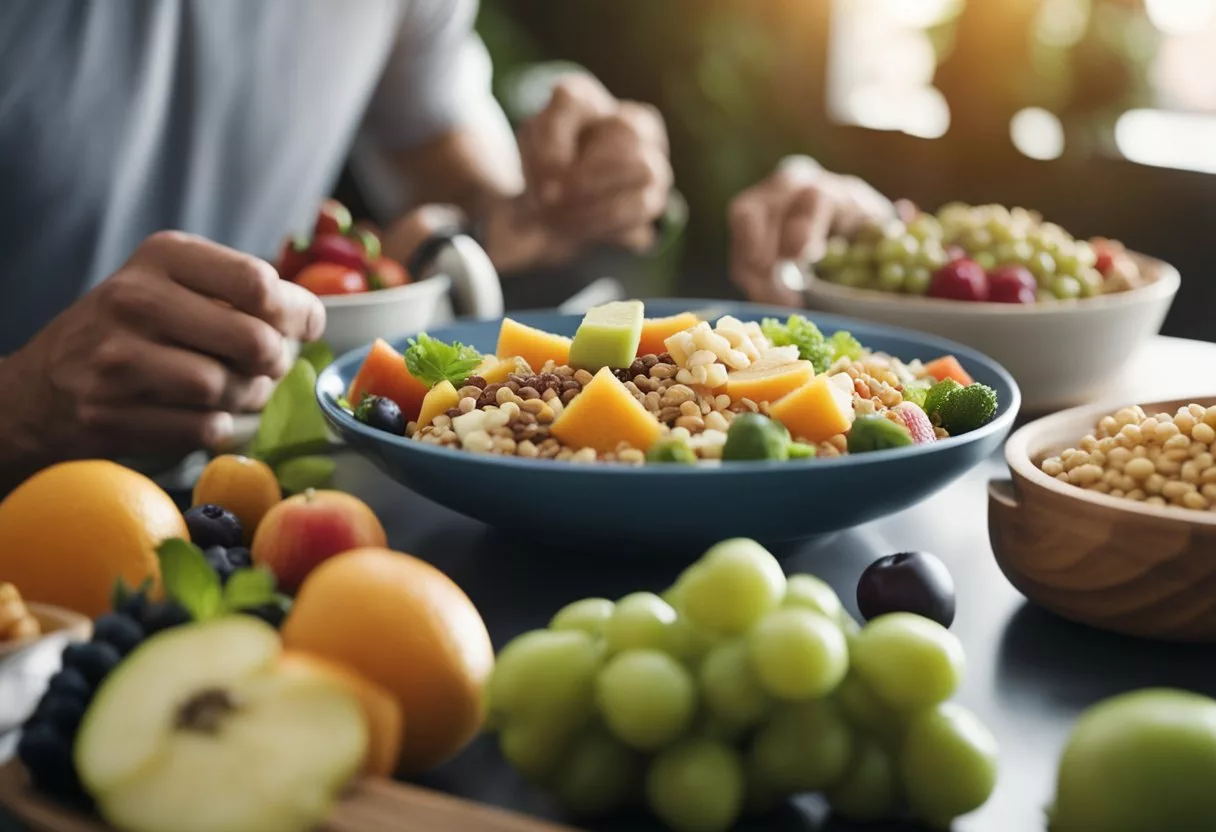
The glycemic index plays a key role in athletic nutrition. New research and personalized approaches are shaping how athletes use this tool. At the same time, sports nutrition studies face unique challenges.
Emerging Research on Glycemic Index
Recent studies focus on how the glycemic index affects endurance. Scientists are looking at carbohydrate oxidation during exercise. They want to see how different GI foods impact energy use.
Some research explores GI and weight loss in athletes. Others examine its role in preventing chronic diseases. These studies may change how athletes choose pre-workout meals.
New tech helps track blood sugar in real-time. This could lead to better GI-based meal planning for athletes.
Development of Personalized Nutrition Plans
Athletes have unique needs. Personalized nutrition plans are becoming more common. These plans consider an athlete’s sport, training intensity, and goals.
Genetic testing may help create custom GI-based diets. Some athletes might handle high-GI foods better than others. Others may need more low-GI options.
Tracking tools let athletes see how foods affect their performance. This data helps fine-tune meal plans. It can show which GI choices work best for each person.
Challenges in Sports Nutrition Research
Sports nutrition studies face several hurdles. It’s hard to control all factors in athletic performance. Diet is just one piece of the puzzle.
Getting enough participants can be tough. Elite athletes have busy schedules. This makes long-term studies challenging.
Measuring real-world impact is complex. Lab results don’t always match field performance. Researchers must find ways to bridge this gap.
Funding can be limited for sports nutrition research. This slows progress in understanding GI’s full impact on athletes.
Frequently Asked Questions
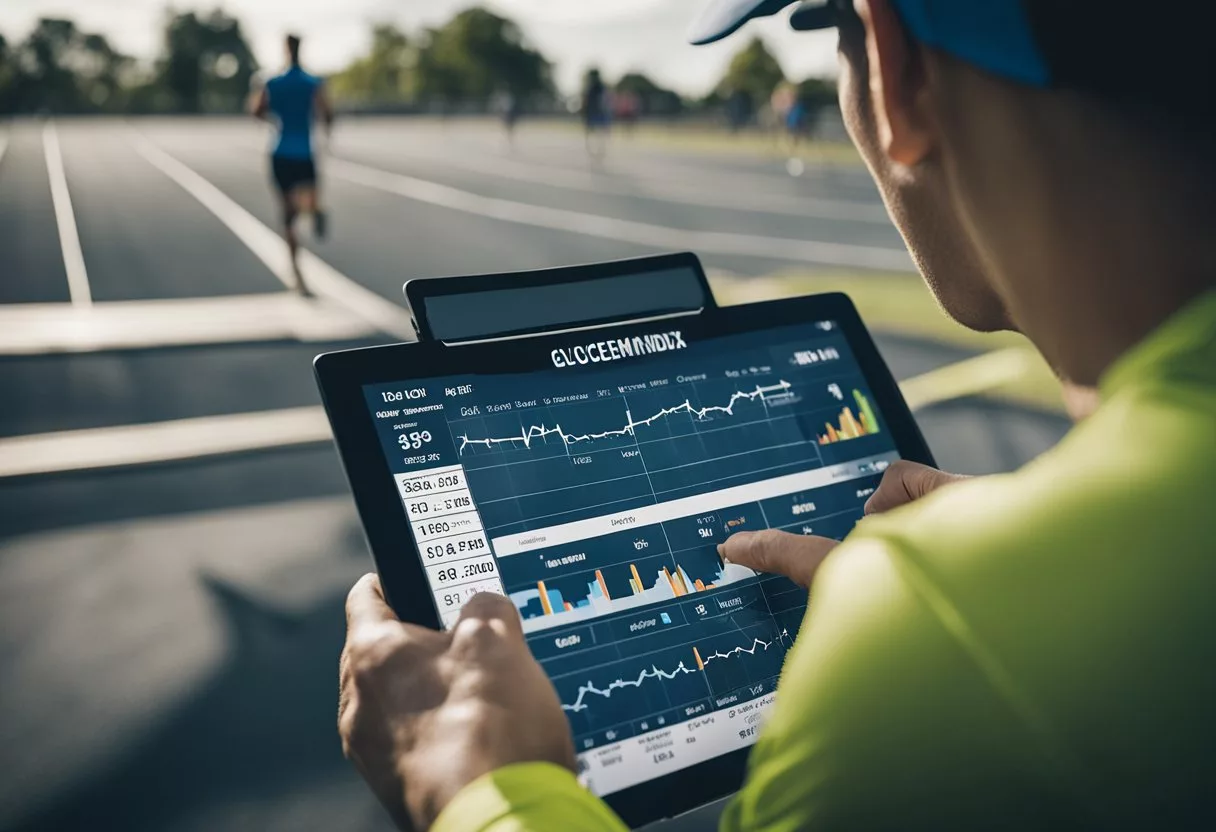
The glycemic index can affect athletic performance in various ways. It influences energy levels, recovery, and endurance. Proper timing and food choices are key for optimal results.
How does the glycemic index affect energy levels during exercise?
The glycemic index impacts blood sugar levels during exercise. High GI foods raise blood glucose quickly, providing rapid energy. Low GI foods offer a slower, more sustained release of energy.
This can affect performance differently based on exercise type and duration. Short, intense activities may benefit from high GI foods. Longer endurance events might favor low GI options for steady energy.
What are the best high glycemic index foods to consume for athletic performance?
Some high GI foods suitable for athletes include white bread, sports drinks, and ripe bananas. These can provide quick energy before or during exercise.
Other options are potatoes, rice cakes, and watermelon. These foods can rapidly replenish glycogen stores after intense workouts.
What role does the glycemic index play in post-exercise recovery?
The glycemic index is important for post-exercise recovery. High GI foods can quickly restore glycogen levels in muscles after intense workouts.
This rapid replenishment helps speed up recovery. It can also prepare the body for the next training session or competition.
Can consuming low glycemic index foods improve endurance in athletes?
Low GI foods may enhance endurance in some athletes. These foods provide a steady supply of energy over time.
A study on runners found that a low GI diet improved some aspects of endurance performance. However, more research is needed to confirm these effects across different sports.
Should athletes focus on glycemic index when planning their diets?
Athletes should consider glycemic index as part of their overall nutrition plan. It’s one factor among many in sports nutrition.
Other aspects like total carbohydrate intake, protein, and meal timing are also crucial. The importance of GI may vary based on individual needs and sport requirements.
How does the timing of consuming high GI foods influence workout effectiveness?
Timing of high GI food consumption can affect workout effectiveness. Eating these foods right before exercise can provide quick energy for high-intensity activities.
Consuming high GI foods immediately after exercise can aid in rapid recovery. This helps replenish glycogen stores and prepare for the next training session.
